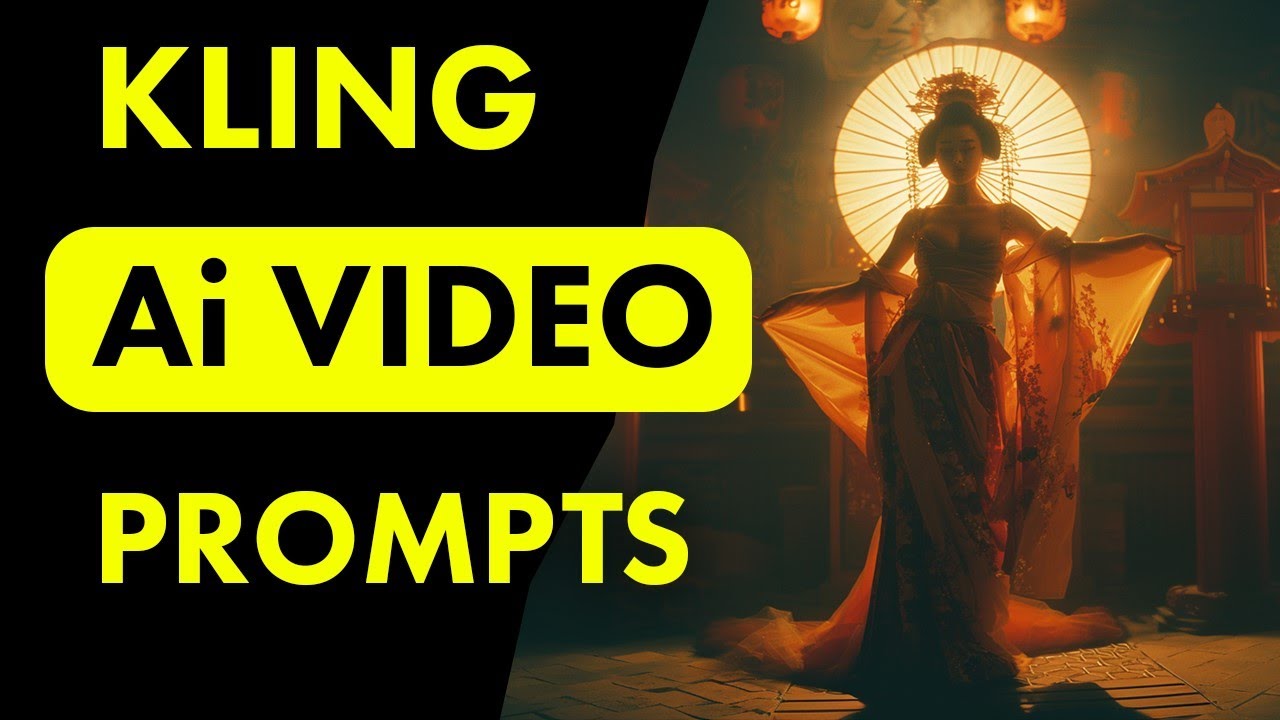How to Prompt for Realistic Human Motion in Kling Ai Video Generator! - Image-to-Video
People & Blogs

Sure, let's start with the first step.
Introduction
The Kling AI video generator is an exceptional tool for turning static images of your characters into realistic moving videos. Its prompt control for generating different human motions is one of the best I’ve seen so far. In this article, we’ll explore how to create various movements and control your characters like puppets.
Example 1: Woman Sitting on a Sofa
To demonstrate, let’s start by uploading an image of a woman sitting on her sofa. The key lies in how you prompt for actions in the video. Instead of simply describing the scene, like “a woman in her living room,” focus on the actions. For instance, use a prompt such as “a husky puppy runs onto the woman's lap.” In the generated video, the woman turns her head and looks at the dog, which jumps onto her—exactly as one would expect a dog to behave.
Detailed Prompt Examples
Kling offers an impressive array of actions. Here are a few effective prompts:
- Reading a book: The video shows her holding a book, which appears at the bottom of the screen.
- Drinking tea: The animation successfully depicts her hand and arm movements while she sips tea.
Kling excels at maintaining body structure during hand and arm motions but faces challenges when introducing a lot of motion, such as lying down. Attempting to animate her lying down often results in some blurring and loss of facial shape.
Professional Mode vs Standard Mode
Kling has a “Professional Mode” that increases visual quality but struggles with extensive motion. For example, with the prompt “the woman lies down on the couch,” the generated actions differ between standard mode and professional mode. In professional mode, the background plants shake as if there's an earthquake, but she doesn’t lie down.
Relevance and Creativity Slider
To make Kling obey your prompt more strictly, you can adjust the "Relevance and Creativity" slider. Turning this slider all the way up forces Kling to follow the prompt closely. For example, with the highest setting, the woman successfully lies down on the couch, although her face blurs and colors become brighter around her due to the increased motion.
Further Examples
Photo of a Man Standing Still
We animated an image of a man standing still, varying the "Relevance and Creativity" slider. At the middle setting, the AI followed the prompt generally well, but at maximum, it followed it very closely. One of the best animations involved two motions: kneeling and praying. Although the clothing details smoothed out towards the end, the movement was perfect and without blurring.
Head and Hand Movements
You can control head movements by directing the subject to look in different directions. The generated shadows on the wall even move to match the head orientations, though they are not entirely accurate: the shadow may still show a deformity.
For hand and finger movements, the AI performs exceptionally well. In one test, instructing a man to point his finger excitedly resulted in an animation where the finger popped into the scene with matching textures and color as his face.
Limitations
One current limitation of Kling is animating different camera motions like zooming in or panning. Multiple attempts to prompt for these kinds of camera movements failed to yield results.
Conclusion
Despite some limitations, Kling offers unparalleled control over animating human motions in image-to-video generation. Experiment with various body movements, and most prompts will likely produce accurate animations in just a few tries.
For further information on visual styles in Kling, check out this video tutorial: [insert tutorial link here]
Keywords
- Kling AI
- Image-to-Video
- Human Motion
- Action Prompts
- Relevance and Creativity Slider
- Professional Mode
- Animation Quality
FAQ
Q: What makes Kling AI video generator exceptional? A: It has the best prompt control for generating different human motions and keeping body structure intact during most animations.
Q: How can I ensure Kling follows my prompts accurately? A: Adjust the "Relevance and Creativity" slider. Turning it all the way up forces Kling to adhere closely to your prompt.
Q: Are there any limitations to using Kling AI? A: Yes, Kling struggles with animating extensive motion in "Professional Mode" and fails to animate camera movements like zooming in or panning.
Q: Can Kling handle fine details like facial expressions and hand movements? A: Yes, Kling excels at animating hand and arm motions while maintaining the integrity of the character's body structure.
Q: How do changes in the “Professional Mode” affect the output? A: While it increases visual quality, it struggles with extensive motion, sometimes causing background elements to unintentionally move.
Q: What should I focus on in my prompts? A: Focus on describing actions rather than the scene itself to achieve the best results.